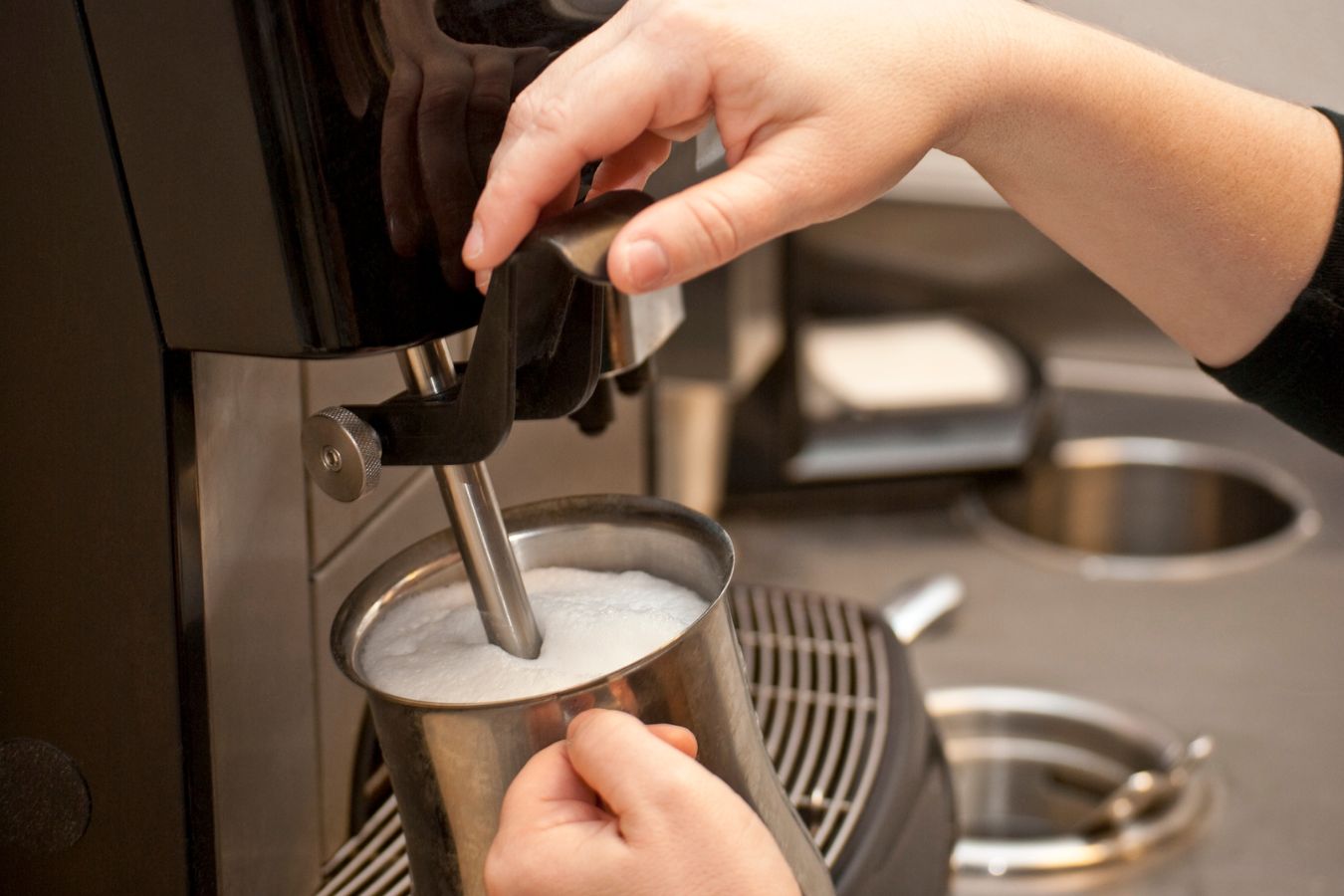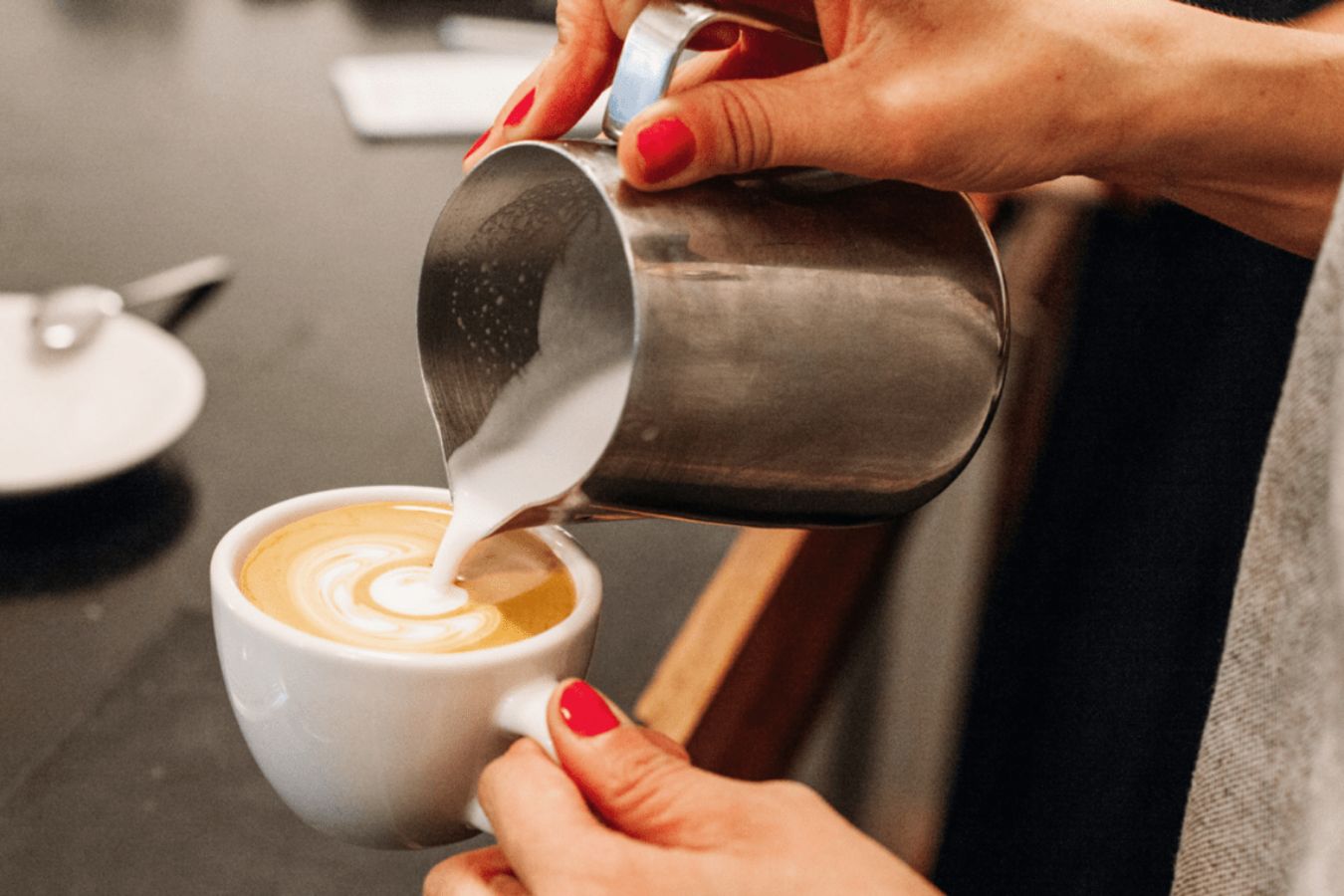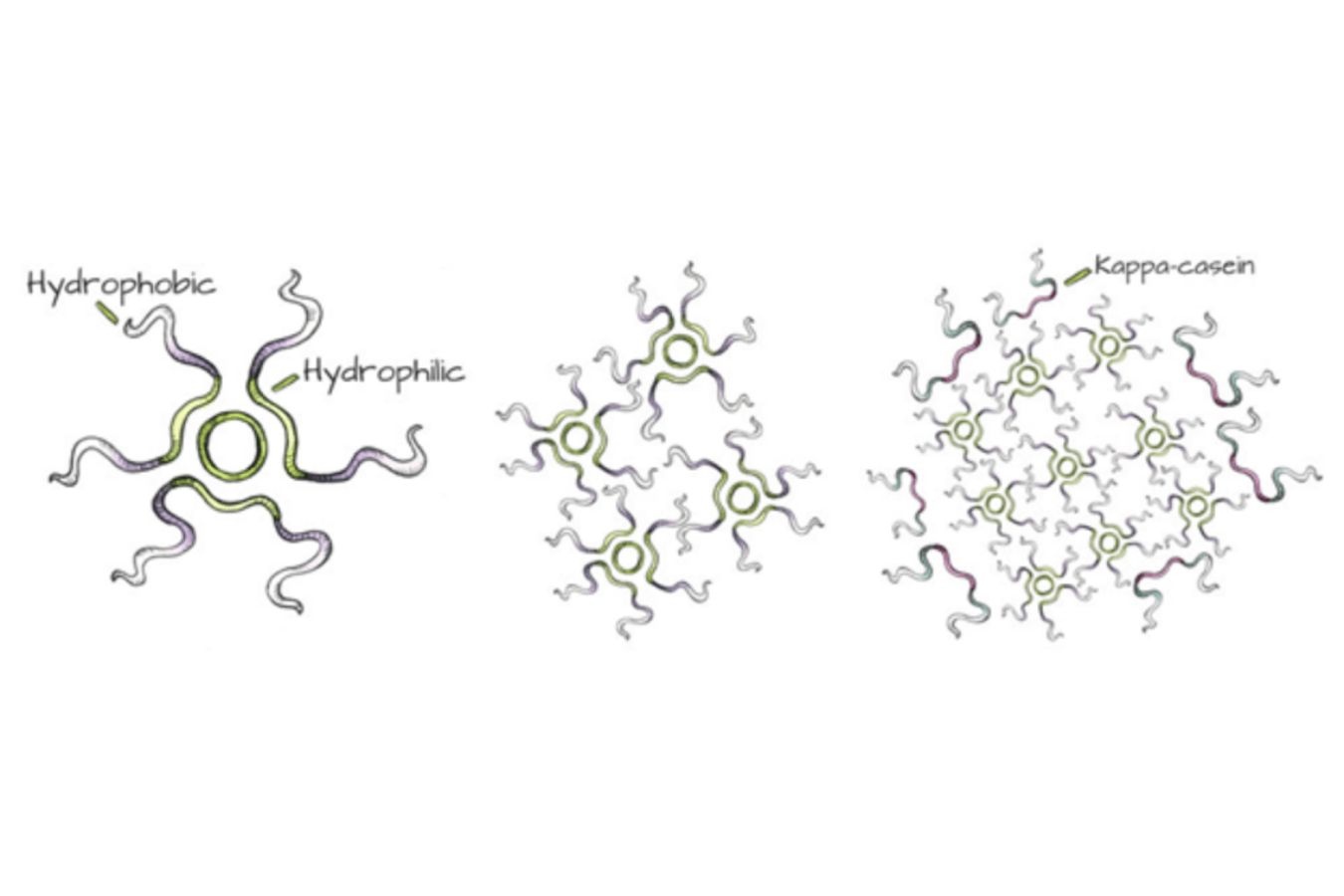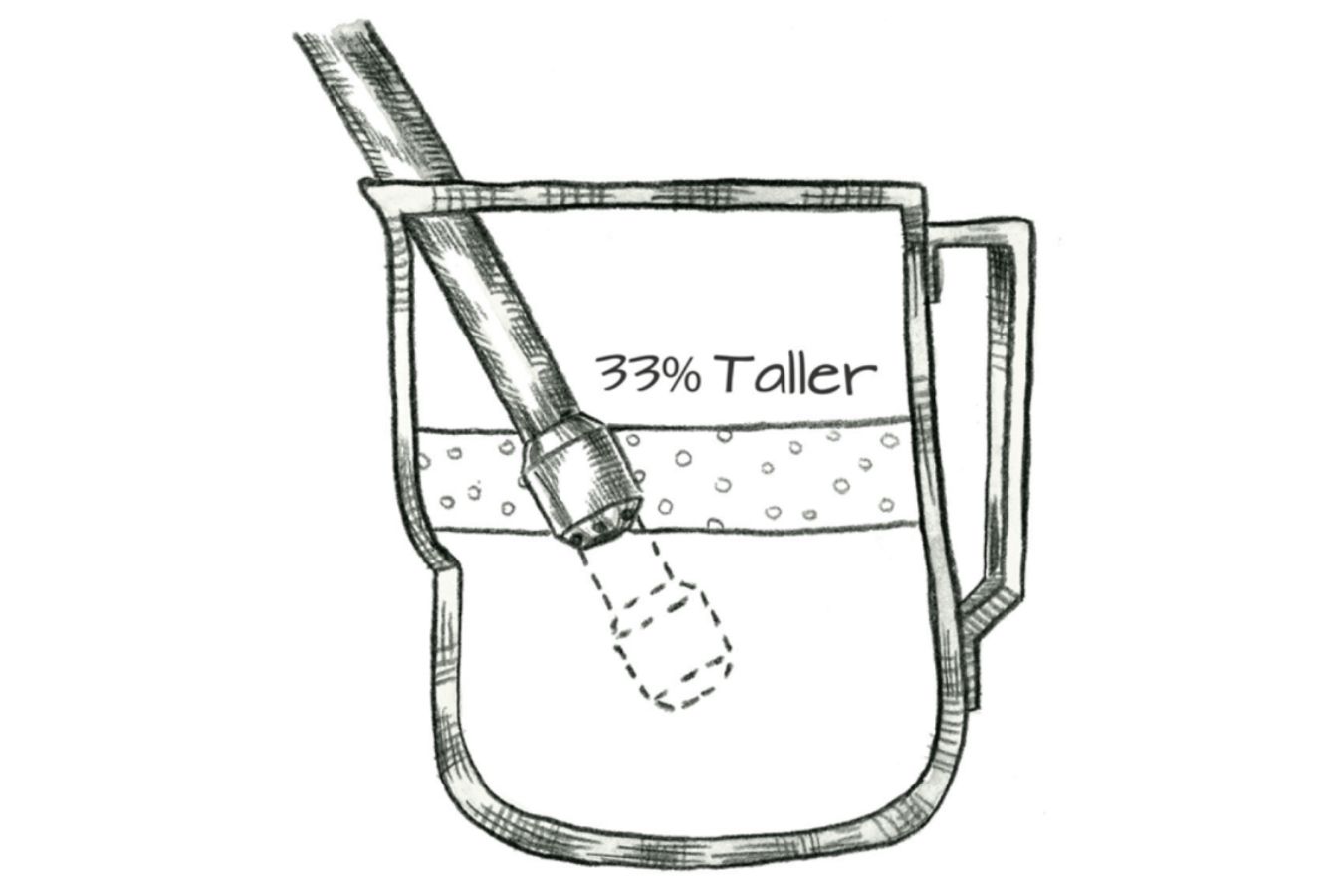
While Espresso is the heart of a cappuccino or latte, which doesn’t account for more than a third of the volume, milk and milk foam make up the rest of the cup. However, most baristas have a lot of understanding of the coffee extraction process, but there is not much similar information about how to steam the milk properly – In addition to all kinds of suggestions, internet instructions from people who have never even poured a real latte.
As a result, there are several issues that we will solve together in this topic, which are the principle of proper milking, some notes when using skim milk, and finally the different points when beating milk for Cappucino and Latte. The article is a reference, and if it doesn’t match your experience – please contribute more comments!
The Chemical Composition Of Milk
Using a little chemical knowledge, you’ll gain more insight into steam milk before you start studying the “sinking part” of the massive mass of knowledge related to milk foam.
Think of milk this way: Cow’s milk is a nutritional supplement for young calves. It is full of all the essential nutrients that a cow needs, namely water, sugar, protein, fat, and minerals. Water accounts for the majority of milk, about 87%.
The second most common compound in milk is sugar, which accounts for about 4.8%. (Cow’s milk has a special sugar called lactose – that’s why fresh milk tastes sweet, and sour when fermented (bacteria in milk convert lactose into lactic acid).”

Although the fat milk ads say that they have separated 1-2% of the fat available in milk, in fact, for natural pure milk the average fat content is about 3.9%. Meanwhile, milk protein accounts for about 3.4% of total milk volume. We often refer to protein in milk as the forming and stabilization of foam.
However, fat also plays an equally important role, (will be reiterated in the following section). Left in milk, mainly various minerals (0.8%), such as Ca, Mg .. These minerals have a fairly limited effect on the taste of milk in general and the beating of milk in particular.
Steam milk (Steaming)
When you beat the milk, you do two things simultaneously: create foam by putting air into the milk and heating the milk. The milking operations for Cappucino and Latte will be more specific at the end of the article).
When steam is compressed by pressure through the holes in the vapor head, they create a stir on the surface of the milk, and create sound, the air on the surface is quickly introduced into the milk by this movement. If the steam head is slightly submerged completely in the milk, the surface of the milk lacks agitation. Milk will still be heated up by hot steam but no air will be introduced – meaning there is no foam.

Steam is a source of heat (which increases milk temperature) and is also the dynamic that pulls air into the milk (stirring). Milk foam forms due to the surrounding air entering the milk, not by steam – according to barista hustle
While steam introduces air bubbles into milk to float this structure, steam also heats the milk (it’s time to return to the previously mentioned protein component). In cold milk, milk proteins exist in the form of folding molecular blocks (tier 3 structures) or by multiple protein molecules bonded together (tier 4). Then, as the milk warms up the proteins begin to expand to form an “air-holding” texture.
Milk temperature and protein
One of the most common proteins in milk is Casein, which makes up about 80% of the milk protein composition, hundreds of thousands of protein molecules of this type bind together that form casein-micelles spheres that make up the opaque white color of milk (as on Infographic).
What casein molecules have in common is that they are structured from two parts: the anaerobic tail (that is, not connected to water), and the other is water-loving. The hydrophobic side will cling to the air bubbles, while the hydrophilic part binds to the milk. This helps give milk foaming properties when moderately heated.

However, if the milk overheats, the proteins break down or completely deform, releasing the entire air – meaning the milk is free of foam. This is why it is important in the principles of steam milk to try to introduce as much air into the milk as possible before the milk heats up to room temperature – around 37°C (100 °F).
At the same time, the process of heating milk also helps to enhance its sweetness of the milk. The natural long-chain carbohydrate (sugar) components found in milk will be broken down into single sugars, the simpler the carbohydrate molecules, the easier it is to taste sweet.
Finally, steam not only adds air and heats the milk, but also creates thrust for centrifugal movement in the cup. By positioning the chopsticks slightly properly, the movement of the vortex will destroy the large air bubbles formed during the beating of milk. This is because the air is lighter than milk, so large bubbles will rise to the surface and form a dense layer. It is difficult to pour art into Espresso.
Effects of milk fat on milk foam
You may have heard someone say skim milk foams are better than regular milk. Then another barista, who thought whole milk was best for steam. If viewed correctly, neither of these views will be the opposition!
The fat in milk has not had much effect other than destabilizing the foam. That’s because the hydrophobic part of the milk protein (casein) is capable of attaching to fat instead of attaching to air bubbles. So the more fat there is in milk, the less micro-foam we have.
With this in mind, skim milk will bring air bubbles with the most stable and durable structure possible. However, this type of foam is difficult to pour art a latte, instead of flowing smoothly out of the cup, skim milk tends to float “float” on the cup.
In short, whole milk tends to produce a smooth, stable foam and is more suitable for concoction. After all, is to create an emulsifier system between milk, protein, and fat, not just “scour” a lot of foam.
Beat the milk for Cappucino and Latte.
Although both Cappucino and Latte are made up of espresso with milk and foam, because Cappucino requires a ratio of espresso to hot milk to 1/1/1, the milk foam will be as thick as the amount of milk in the cup. Lattes are less foamy and more milk in the ratio of 1 espresso / 2 parts milk with a thinner foam layer. Here are three main stages and the necessary notes when beating milk for these two drinks:
Step 1, Prepare The Milk.
It is best to use pasteurized milk, to refrigerate 1-3°C before pouring into the shift (250ml for a 600ml shift, 200 ml for a 450ml case). For espresso machines, you should be steam commune for roughly 1 second, use a clean wipe to remove all the milk or water leftover in the tap, until only steam remains.

Principles of steam milk, in the beginning, keep the milk shift upright, while the chopsticks are slightly located about 1cm deep (just submerged in the head of steam) and at an angle of about 30° from the milk surface – although the position of the chopsticks and the angle of tilt are not important, it only helps you optimize the introduction of air into the milk.
It is recommended to use a metal milk beat, with a measuring line (ml) the better, because principles of steam milk the metal transmits heat well, making it easy to feel the direct heat of the milk.
Step 2, Stretching
Start the air hose, when you see the milk start swirling, lower the shift to beat the milk to hearing a loud “flattening” to create more foam. Stop foaming before 37°C (100°F, slightly warm hands) – Or when the amount of milk foam in the shift rises by about a third to the original milk volume (for cappuccinos); Especially lattes stop creating foam when the foam rises 2-4cm.
- The principles of steam milk are while beating the milk, pay attention to the sound of “flattening” created by steam, the more “flattening” the milk face, the more air can be brought in to form micro-foam.
- When the milk is already hot above 37°C if foam continues to be created, there is a risk of forming large, long-dissolved air bubbles.
Contrary to popular wisdom about the position of the chopsticks should be placed close to the edge of the milk cup or can go into the middle of your milk cup. Experts from barista hustle have shown that it makes no difference where you position the chopstick slightly, with how much angle is in the milk – you can put it anywhere.
However, if the chopsticks are slightly submerged, you will not be able to put much air into the milk; instead, it’s heat and some condensed steam. Because when steamed, milk can increase by up to 10% of volume due to steam from the steam hose condensing in the milk (100g of milk will weigh 110g after steaming).

Conversely, if the faucet is slightly higher (even only 1mm) from the surface of the milk, then the chaos generated by steam will shoot the milk “splashed”. You can’t lose all the heat from water vapor into the atmosphere – you want it to go into the milk to heat it more efficiently, so the depth of the vapor hose in the milk is more important than its location.
Step 3, Create A Spinning And Finish
When enough foam or milk is already hot, you need to tilt the cup a little, so that the steam hose on the edge of the cup is just enough to be submerged in milk foam and maintain the spiral flow. Turn off the chopsticks slightly when the milk temperature has been too much to bear with the hands. At this time, the milk temperature reaches about 60-65°C (140-150°F) to clean the chopsticks slightly, bringing them back to the old location.

The vortex will help to dispel large bar-shaped bubbles at the Stretching stage to make the milk smoother. During this period, the principles of steam milk it is not recommended to appear “flattened”, just keep the milk flow swirling and do not bring the head slightly submerged in the milk because the heat will make the protein dissuade, dissolve all the micro-foam.
In the end, there will be no divine technique for milking a perfect Cappuccino, and perseverance in training and constant learning are the most important skills you need to equip!
Source of reference:
- baristaweapons.blogspot.com/ Beat milk chi cappuccino and latte
- www.clivecoffee.com/ How to Steam Milk
- www.clivecoffee.com/ The Science Behind Perfect Steamed Milk
- www.latteartguide.com/ How To Steam Milk For Barista Coffee
- www.thespruceeats.com/ Frothed Milk for Espresso Drinks